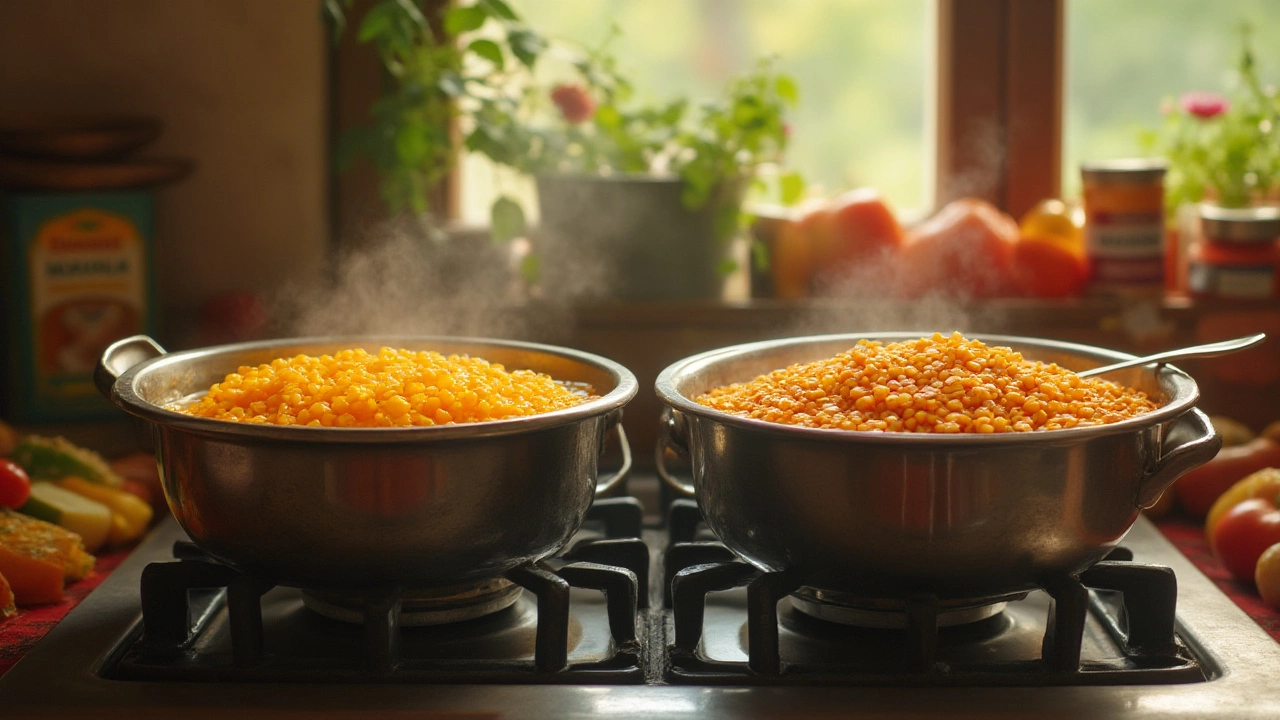Lentil Digestion: How to Keep Your Gut Happy
When talking about lentil digestion, the process your body uses to break down lentils and absorb their nutrients. Also known as dal digestion, it matters a lot for anyone who eats Indian meals regularly.
Dal, a staple Indian dish made from split lentils, beans, or peas is the most common way we get lentils into our diet. Lentils, small, protein‑rich legumes that come in many colors bring a hefty dose of protein and fiber. Fiber, the indigestible part of plant foods that feeds good gut bacteria is the key player that makes digestion smoother. And Gut health, the overall condition of your digestive system, including the balance of microbes decides how well you feel after a hearty bowl of dal.
Why Lentil Digestion Can Be Tricky
First, lentils contain resistant starch and oligosaccharides that can ferment in the colon. This means lentil digestion often produces gas if your gut microbes aren’t used to it. The good news? Adding a bit of acidic ingredients like lemon juice or tamarind can lower the pH, making those sugars easier to break down. Second, the anti‑nutrients such as phytic acid bind minerals and slow absorption. Soaking lentils for a few hours and discarding the water cuts down on phytic acid, which improves both digestion and nutrient uptake.
Another factor is cooking method. Pressure cooking or slow simmering softens the seed coat, which reduces the effort your stomach needs to grind the lentils. If you skip the heat and eat raw lentils, the cell walls stay intact and you’ll feel bloated. In short, the sentence “lentil digestion requires proper cooking” is a simple truth that helps you avoid uncomfortable after‑effects.
Now, how does fiber fit in? Soluble fiber, the type that dissolves in water and forms a gel‑like substance slows glucose absorption, keeps you fuller longer, and feeds beneficial bacteria. Insoluble fiber, the type that adds bulk to stool and moves waste through the colon helps prevent constipation. Both types are present in lentils, so a single serving of dal gives you a balanced fiber boost.
If you want to upgrade your gut health, combine lentils with spices that have digestive benefits. Turmeric’s curcumin reduces inflammation, cumin aids enzyme production, and asafoetida (hing) is known for easing gas. Adding a pinch of these spices creates a triple effect: they flavor the dish, support enzyme activity, and calm the gut.
Finally, timing matters. Eating a smaller portion of dal with a side of veggies spreads out the fiber load, letting your gut handle it more gently. Pairing dal with a dollop of yogurt introduces probiotics, which further improve the microbial balance for smoother digestion.
All these tips—soaking, proper cooking, smart spice choices, and probiotic pairing—show how lentil digestion connects directly to overall gut health. Below you’ll find a curated set of articles that dive deeper into each of these aspects, from the science of fiber to classic Indian recipes that are easy on the stomach. Explore the collection to turn your love for dal into a gut‑friendly habit.

What Happens If You Don't Soak Dal? Health, Nutrition, and Cooking Explained
Ever wondered if you can skip soaking your dal? Here’s what actually happens when you don’t soak lentils, including health effects, cooking time, and taste.